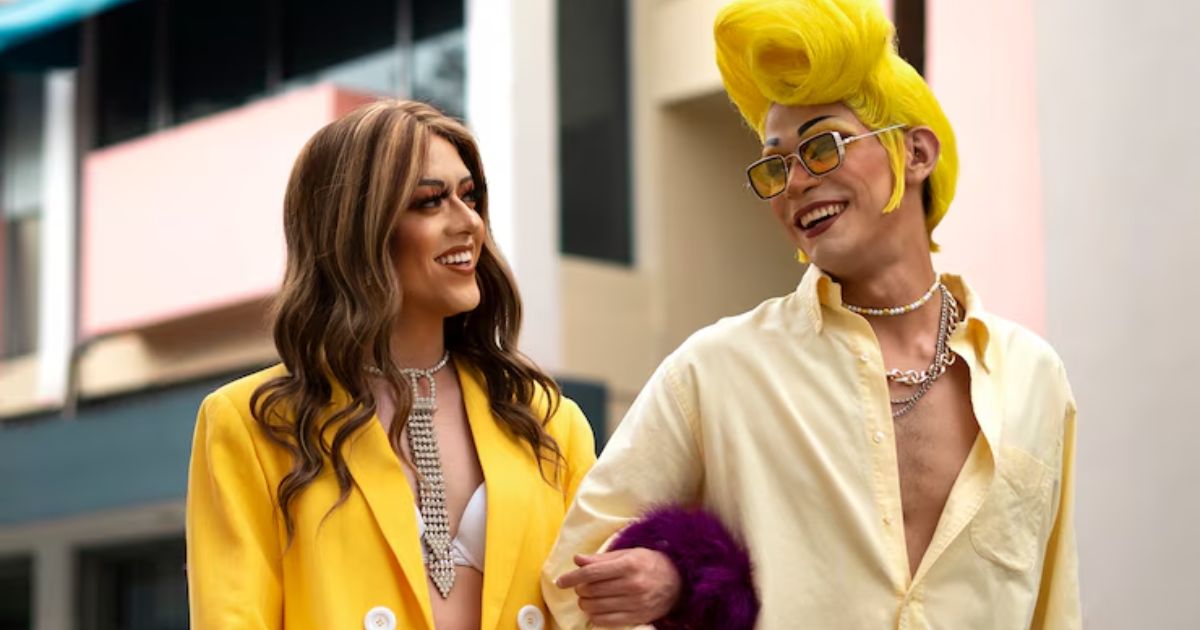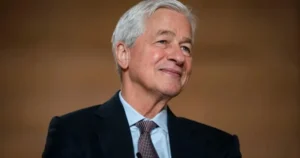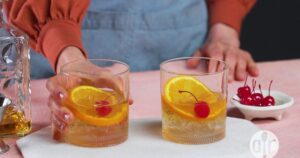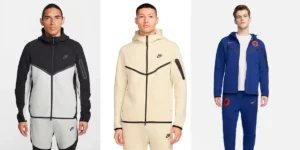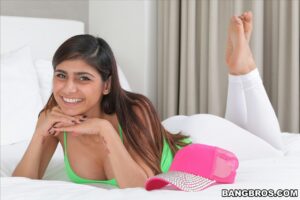After the difficult aftermath of World War II the 1950s emerged as a time that restored elegant fashion traditions. The period showcased glamour fused with structural elements along with a fashion approach that same identity values and optimistic spirit. During the 1950s women loved to wear body-hugging garments and voluminous skirts along with refined hairstyles alongside men who favored their sleek tailored outfits for showing strength.
The fashion styles of the 1950s went beyond simple appearances because they displayed evolving cultural changes as well as changing gender roles throughout an expanding consumer society. Throughout the decade various groups including rebellious subcultures and Hollywood movie stars wore garments that combined elegant forms with personal self-identity expression.
Post-War Influence on Fashion
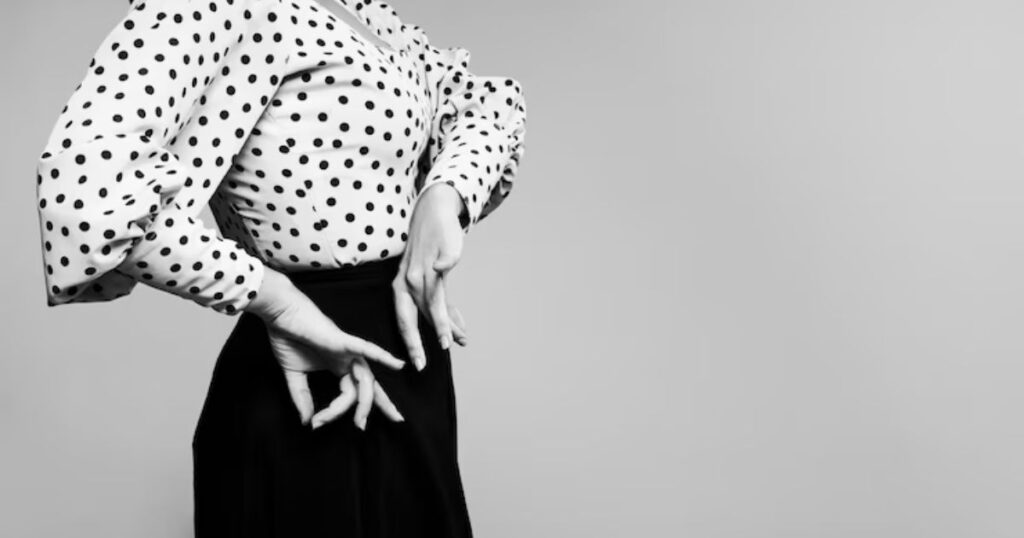
During the aftermath of World War II people rushed to discard the austere wartime fashion habits. Christian Dior introduced “New Look” in 1947 which established the fashion trends for the early 1950s through its silhouette of small waist, voluminous skirts and plush textiles. People abandoned utilitarian designs for elegant expressiveness in their clothing that occasionally became excessively lavish.
Consumerism increased following economy recovery so more people started accessing fashion while mass production made stylish clothing accessible to wider audiences. People used the fashion world to show societal hope and prosperity because it expressed their need to revive normalcy with extra style and feminine elements.
The Hourglass Silhouette
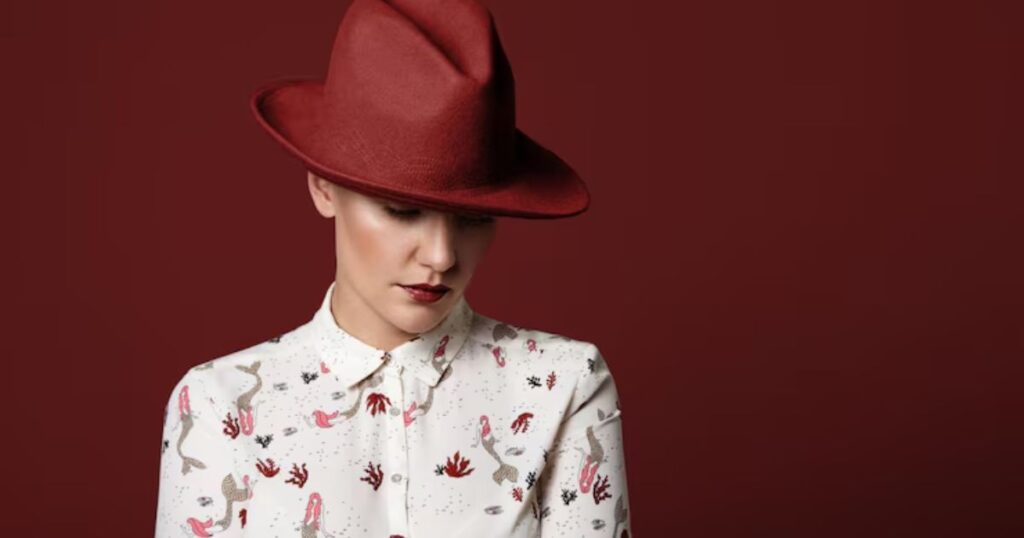
The hourglass body shape became the primary fashion standard for women throughout the 1950s. The waist area received special attention with belts or corsets that made waists appear narrow and women wore dresses or skirts that flared from either a tight-fitting shape at the hips or full material around the waist and below. Women in the 1950s wore blouses which had high collars together with gentle necklines while their bodices maintained defined structures.
The body-hugging frame displayed curves and femininity instead of the loose-cut fashion trends from past decades. Women wore crinolines beneath their clothing to enlarge their silhouette while bullet bras helped women achieve a desirable breast shape. Every woman sought to replicate the hourglass figure after movie stars made it the defining body shape of that time period.
Men’s Fashion: Clean Cuts and Rebellion
Men’s fashion in the 1950s balanced conformity with rebellion. Most working men during that era selected slim-fit suits which complemented their fedora hats and polished shoes for their professional and formal obligations. Men commonly chose brown and gray and navy to create their outfits during the 1950s. Youth culture brought about the “greaser” appearance that found its origin in rock ‘n’ roll artists Elvis Presley and James Dean.
Their appearance consisted of leather jackets together with white tees and denim jeans and slicked-back hair which stood for rebellion among teenagers. The fashion clash between traditional bespoke clothing and street style rebellious fashion reflected both cultural and generational changes of the 1950s and created diverse male fashion alternatives.
Fabrics and Patterns of the Era
The 1950s brought affordable synthetic fabrics including nylon and polyester together with acrylic that made care easy for these materials. Mass-produced fashion occurred because synthetic materials transformed typical clothing choices. Cotton endued status as a top choice because people liked using it for both dresses in everyday situations and casual blouses.
Polka dots along with gingham together with floral prints and checks spread widely during this time while creating a charming polished atmosphere. A new fashion trend emerged of using bold color blocking techniques and soft pastel shades which proved that fashionable wear could also be fun. The revolutionary pairing of innovative fabrics with eye-catching designs granted people and manufacturers an unprecedented scope of design possibilities.
Hollywood’s Influence on 1950s Fashion
Hollywood became the primary force that established fashion tendencies throughout the 1950s. Audrey Hepburn alongside Marilyn Monroe and Grace Kelly used their status as film stars to establish fashion influence worldwide. The fashion world admired Hepburn for her elegant style that combined simple black dresses and ballet flats and recognized Monroe through her alluring outfits that fitted perfectly around her body.
Through her fashionable attire Grace Kelly supplied royal elegance that women could wear in their regular daily outfits. The stars used their roles to shape both women’s apparel choices and the social standards for female beauty and femininity. Wardrobe choices in movies served as inspiration for people who quickly created imitations of what actors wore on the big screen. Through their influential power celebrities elevated fashion as something people wanted to both achieve along with the ability to customize it to personal preference.
Youth Culture and Teenage Fashion
Teenagers gained their own recognized group status for the first time during the 1950s and the era developed new separate fashion trends. Women during this period donned poodle skirts together with saddle shoes paired with sweaters whereas young men chose to wear jeans and leather jackets alongside band T-shirts. The fashion phenomenon of the 1950s developed through rock ‘n’ roll music which fostered rebellious attitudes towards traditional societal rules.
The fashion of teenagers during that time represented cheap but personal clothing which stood as a complete opposite to formal adult clothing conventions. The increasing popularity of department stores and advertising designed for teenagers created the strong demand for this market. The era saw the establishment of trends that youth culture still rules through fashion businesses.
Accessories That Defined the 1950s Look
The polished 1950s dress required important accessories for final completion. The usual ensemble for women in this period included gloves along with pearl necklaces while they donned cat-eye sunglasses with pillbox hats. Women chose structured handbags that matched their daily clothes.
Women decorated their appearance with neck or hair-frowned scarves to enhance their look. Women selected kitten heels together with ballet flats according to which occasion they planned to attend. Both men and women wore fedoras and trilbies as everyday headwear and pocket squares and tie clips enhanced their appearance.
FAQs
The most iconic fashion style which characterized women’s outfits during the 1950s was the hourglass silhouette with full skirts and cinched waists?
Men and women adopted the hourglass shape through clothing that featured wide skirts together with waist-cinching effects for fashion.
During the 1950s Hollywood showcased a vital influence on fashion developments across the world?
Popular Hollywood celebrities both created worldwide fashion movements while defining standard beauty aesthetics and elegant taste.
Were teenagers fashion influencers in the 1950s?
New trends within adolescent culture brought about rebellious and casual clothing that spread across teenage fashion.
Conclusion
During the 1950s fashion assumed several roles beyond retro glamour since it both represented cultural elements and demonstrated identity changes and societal advancements. Throughout the 1950s fashion successfully combined formal shapes with rebellious youthful development.
The fashion trends from the 1950s are still influential today because of their mix of Hollywood movies with post-war national mood. The perpetual allure of this era motivates designers and vintage enthusiasts to be inspired worldwide. People rediscovering this time period honor creative self-expression as well as self-confidence through individual fashion choices.
